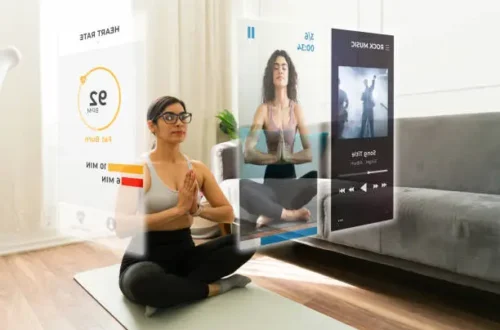Creating a home gym doesn’t mean breaking the bank. With a little creativity and planning, you can build a fitness haven right in your living room, garage, or even a spare corner. Let’s walk through every step of the process so you can sweat smarter—not spend more!
Why Build a Home Gym?
Convenience and Accessibility
Ever skipped the gym because of traffic, bad weather, or just plain laziness? We’ve all been there. A home gym cuts the excuses and brings the workout to your doorstep—literally.
Long-Term Cost Savings
Gym memberships add up. $40/month doesn’t sound like much until you’ve spent over $480 in just one year. Investing in a home gym pays for itself faster than you think.
Setting a Realistic Budget
Determine What You Can Afford
Start by asking: “How much can I comfortably invest right now without stressing my wallet?” Even $100 can get you going if you spend wisely.
Prioritize Your Fitness Goals
If weight loss is your goal, cardio tools might take priority. Building muscle? You’ll want weights. Focus on what you need right now—not what looks cool on Instagram.
Identify Your Fitness Goals
Strength Training
If you’re into building muscle, think dumbbells, resistance bands, or even a bench press if you’ve got space.
Cardio or Weight Loss
Jump ropes, steps, or a second-hand stationary bike can help you torch calories without stepping outside.
Plan Your Workout Space
Choosing the Right Room or Area
Got a garage? Perfect. A quiet corner in the living room? That works too. Make sure the space allows you to move freely and stretch out.
Flooring and Noise Considerations
Grab some cheap interlocking foam tiles from Amazon or Walmart. They protect your floor and absorb noise—your downstairs neighbors will thank you.
Start with the Essentials
Resistance Bands and Dumbbells
These are the holy grail of budget-friendly gear. They’re versatile, space-saving, and effective for both beginners and pros.
Yoga Mat and Jump Rope
A mat adds comfort and stability to your floor workouts. A jump rope? Cardio powerhouse. Both cost under $20 each.
Best Budget Equipment to Invest In
Adjustable Dumbbells
Instead of buying multiple sets, adjustable dumbbells save space and money. Brands like Bowflex and Yes4All offer great value.
Kettlebells and Stability Balls
Great for functional training and core work. You can snag a kettlebell or ball for less than $30 each.
Multi-functional Equipment Ideas
Resistance Bands for All Exercises
Leg day? Arm day? Stretching? Resistance bands can handle it all. It’s like having a full gym in a bag.
Doorway Pull-Up Bars
These are affordable, easy to install, and great for upper body workouts. Just make sure the doorway is sturdy!
DIY Gym Equipment
Homemade Sandbags
Fill a duffel bag with rice, beans, or sand. Boom—instant weight training tool. Just make sure it’s secure so it doesn’t burst mid-squat.
Using Furniture for Exercises
Chairs = tricep dips. Stairs = step-ups. You don’t need fancy gear—just a bit of imagination.
Shop Smart and Save More
Buy Second-Hand Equipment
Check out Facebook Marketplace, Craigslist, OfferUp, or local garage sales. You’ll find killer deals from people clearing out their garages.
Online Deals and Clearance Sales
Sites like Amazon, Walmart, and Dick’s Sporting Goods often run discounts—especially during New Year or Black Friday.
Use Technology to Your Advantage
Free Workout Apps
Apps like Nike Training Club, FitOn, and JEFIT offer killer workouts with no subscription fees.
YouTube Workout Channels
Follow fitness creators like Chloe Ting, Fitness Blender, or HASfit. It’s like having a personal trainer—for free!
Organization and Storage Hacks
Wall-Mounted Racks
Mount hooks or pegboards to hang resistance bands, jump ropes, and mats. Keeps things tidy and easy to access.
Foldable and Stackable Options
Opt for collapsible benches and stackable weights. Small space? No problem.
Creating the Right Atmosphere
Lighting and Music
A well-lit space with a Bluetooth speaker? Total game-changer. Get those endorphins flowing with some good vibes.
Motivational Posters and Mirrors
Hang a mirror—it’s not just for selfies. Seeing your form helps prevent injuries. Add a few posters to pump you up on lazy days.
Stay Consistent Without Overspending
Free Challenges and Schedules
Try 30-day challenges or free PDF workout guides. They keep you accountable and cost zero dollars.
Accountability with Friends
Start a virtual workout group. Use WhatsApp or Zoom to check in. You’ll push harder when someone’s watching!
Safety and Injury Prevention
Proper Warm-Up and Cool Down
Never skip these. A few minutes of dynamic stretching or foam rolling can prevent weeks of pain later.
Maintain and Inspect Equipment
Torn resistance bands? Wobbly bench? Fix or replace immediately. Safety always trumps saving.
Upgrading Your Home Gym Over Time
What to Add When You Save More
As your budget grows, consider a treadmill, rowing machine, or weight bench. Buy slowly, not all at once.
Knowing When to Splurge
When something significantly improves your experience—like a quality mat or adjustable dumbbells—it’s worth it.
Conclusion
Building a home gym on a budget isn’t just possible—it’s smarter, more personal, and incredibly rewarding. You don’t need a massive bank account to get fit. All it takes is a bit of planning, creativity, and dedication.
So, start small, stay consistent, and let your home gym grow with you. Your fitness journey is right there—just a few steps away from your couch.
FAQs
1. Can I build a home gym for under $100?
Absolutely! With a yoga mat, resistance bands, and a jump rope, you’re all set to begin.
2. What’s the most versatile piece of budget equipment?
Resistance bands. They’re compact, cheap, and good for strength, flexibility, and rehab.
3. Is second-hand gym equipment safe?
Yes, just inspect everything before buying—especially weight-bearing gear like benches or racks.
4. How do I stay motivated working out at home?
Create a dedicated space, follow free programs, and join an online accountability group.
5. What should I buy first for a home gym?
Start with a mat, resistance bands, and dumbbells. These will cover most beginner workouts.





